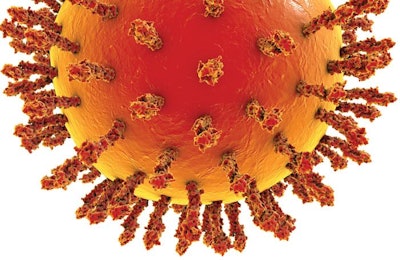
During the first months of 2017, several news reports cited low-pathogenic avian influenza (LPAI) on poultry farms in the U.S.
Avian flu typically occurs on some scale in the country during the seasonal migration of birds in any of the four primary flyways for migratory birds as they travel to and from Canada. However, the situation in the U.S. so far in 2017 has not been like prior bird flu outbreaks, primarily due to the virus strain that is present.
While not new, avian influenza strongly attracted the public’s eye in 2009 after the emergence of swine flu in the U.S. and Mexico. The flu became a worldwide pandemic, spreading to nearly 213 countries and causing nearly 17,000 human deaths.
However, the avian influenza H5 and H7 virus strains that are found in Georgia and other U.S. states are low pathogenic and so cannot be easily spread to humans.
LPAI contrasts with high pathogenic avian influenza (HPAI) in several notable ways. HPAI tends to spread much more quickly, can more easily spread to human beings and has much higher incidences of mortality in poultry flocks. In fact, birds from a flock that recently tested positive for LPAI in Georgia were not even displaying symptoms of illness.
The U.S. is not alone in having to confront difficulties with avian influenza.
South Korea has experienced its worst-ever outbreak of bird flu, with at least 38 million birds culled since the outbreak started last year. France, which has the largest poultry flock in the EU, is also battling the highly contagious H5N8 virus.
China is also seeing a large bird flu outbreak. The Chinese outbreak is vastly different from what is being experienced in most other countries as it has included human infection and fatalities. Infections have been found in more than 16 provinces in China, and at least 87 people have reportedly died as a result. In response, many provinces have banned the trade of live chickens – in Guangzhou, H7N9 was detected in 30 percent of live poultry markets.
Market reaction
While bird flu is a very serious and ongoing concern for the poultry industry, the general population’s worries about the disease are often misplaced.
Media coverage can lead to misplaced consumer concerns and negative consumer reactions, which in turn can affect consumption. Consumers worry about human infection, even with strains that have not shown any ability to be transmitted to, or among, humans.
It is also the case that protectionism, rather than animal health concerns, can lie behind trade embargos.
Whenever a bird flu outbreak occurs, importing markets will typically respond by closing borders to some degree. Sometimes, a full ban on imports from a certain country is warranted, but too often trade restrictions are based on a desire to protect local industries rather than on stopping the spread of disease.

















